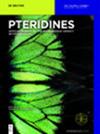叶酸受体基因在上皮性癌症中上调,部分与患者预后相关
IF 0.9
4区 医学
Q4 BIOCHEMISTRY & MOLECULAR BIOLOGY
引用次数: 0
摘要
摘要目的通过生物信息学综合分析,探讨卵巢癌症患者叶酸受体(FOLR1、FOLR2、FOLR3)的表达、功能富集、信号传导途径及预后。方法采用GEPIA在线分析工具,通过TCGA数据库,比较癌症患者卵巢上皮癌症与相应正常卵巢组织中叶酸受体(FOLR1、FOLR2和FOLR3)mRNA的表达水平。通过STRING数据库构建了FOLR1、FOLR2、FOLR3和相关基因的蛋白质-蛋白质相互作用(PPI)网络。分析了GO和KEGG对FOLR1、FOLR2、FOLR3和相关基因的富集。通过log-rank检验比较FOLR1、FOLR2和FOLR3mRNA高表达和低表达上皮性癌症患者的总生存率(OS)和无进展生存率(PFS)。结果卵巢上皮癌症组织中FOLR和FOLR3mRNA的表达显著高于癌症患者相应的正常卵巢组织(P<0.05)。PPI网络显示53个节点和298个边缘,平均节点度为11.2。局部聚类系数为0.744,表明蛋白质-蛋白质富集具有统计学意义(P<1.0×10−16)。叶酸受体(FOLR1、FOLR2和FOLR3)和相关基因分别主要富集在叶酸转运、甲氨蝶呤跨膜转运蛋白活性、生物过程的抗叶酸耐药性、分子功能和KEGG途径中。与低表达受试者相比,FOLR1和FOLR3高表达上皮性卵巢癌症患者的PFS显著降低,具有统计学意义[风险比(HRFOLR1)=1.26,95%置信区间(CI):1.09-1.45,P<0.05,HRFOLR3=1.22,95%CI:1.06–1.40,P<0.05],以及FOLR3低表达组和高表达组。结论叶酸受体(FOLR1、FOLR2和FOLR3)基因在上皮性卵巢癌症中表达上调,部分与患者预后不良有关。本文章由计算机程序翻译,如有差异,请以英文原文为准。
Folate receptor genes were up-regulated in epithelial ovarian cancer and partly associated with patients’ prognosis
Abstract Objective The present work aimed to investigate folate receptor (FOLR1, FOLR2, FOLR3) expression, functional enrichment, signaling pathway and prognosis in ovarian cancer patients by integrated bioinformatics analysis. Methods Folate receptor (FOLR1, FOLR2, and FOLR3) mRNA expression level between epithelial ovarian cancer and corresponding normal ovarian tissue of cancer patients was compared through the TCGA database by GEPIA online analysis tool. The protein–protein interaction (PPI) network of FOLR1, FOLR2, FOLR3, and related genes were constructed through the STRING database. GO and KEGG enrichment of FOLR1, FOLR2, FOLR3, and relevant genes were analyzed. Overall survival (OS) and progression-free survival (PFS) between FOLR1, FOLR2, and FOLR3 mRNA high and low expression epithelial ovarian cancer patients were compared by log-rank test. Results FOLR and FOLR3 mRNA expression in epithelial ovarian cancer tissue were significantly higher than that of corresponding normal ovarian tissue of cancer patients (P < 0.05) The PPI network showed 53 nodes and 298 edges with the average node degree of 11.2. The local clustering coefficient was 0.744, which indicated that the protein–protein enrichment was statistically significant (P < 1.0 × 10−16). Folate receptor (FOLR1, FOLR2, and FOLR3) and relevant genes were mainly enriched in folic acid transport, methotrexate transmembrane transporter activity, antifolate resistance for biological process, molecular function, and KEGG pathway, respectively. The PFS of FOLR1 and FOLR3 high expression epithelial ovarian cancer patients was significantly lower compared to low-expression subjects with statistical significance [hazard ratio (HRFOLR1) = 1.26, 95% confidence interval (CI): 1.09–1.45, P < 0.05, HRFOLR3 = 1.22, 95% CI: 1.06–1.40, P < 0.05]. However, the OS was not statistically different between FOLR1, FOLR2, and FOLR3 low and high expression groups. Conclusion Folate receptor (FOLR1, FOLR2, and FOLR3) genes were up-regulated in epithelial ovarian cancer and partly associated with patient’s poor prognosis.
求助全文
通过发布文献求助,成功后即可免费获取论文全文。
去求助
来源期刊

Pteridines
生物-生化与分子生物学
CiteScore
1.20
自引率
25.00%
发文量
6
审稿时长
>12 weeks
期刊介绍:
Pteridines is an open acess international quarterly journal dealing with all aspects of pteridine research. Pteridines are heterocyclic fused ring compounds involved in a wide range of biological functions from the color on butterfly wings to cofactors in enzyme catalysis to essential vitamins. Of the pteridines, 5,6,7,8-tetrahydrobiopterin is the necessary cofactor of several aromatic amino acid monoxygenases, the nitric oxide synthases and glyceryl ether monoxygenase (GEMO). Neopterin plays an essential role in the immune system and is an important biomarker in laboratory medicine for diseases such as HIV, cardiovascular disease, malignant tumors, among others.
Topics:
-Neopterin, dihydroneopterin, monapterin-
Biopterin, tetrahydrobiopterin-
Folates, antifolates, riboflavin-
Phenylalanine, tyrosine, phenylketonuria, serotonin, adrenalin, noradrenalin, L-DOPA, dopamine, related biogenic amines-
Phenylalanine hydroxylase, tyrosine hydroxylase, tryptophan hydroxylase, nitric oxide synthases (iNOS), alkylglycerol monooxygenase (AGMO), dihydropterin reductase, sepiapterin reductase-
Homocysteine, mediators of inflammation, redox systems, iron.
 求助内容:
求助内容: 应助结果提醒方式:
应助结果提醒方式:


